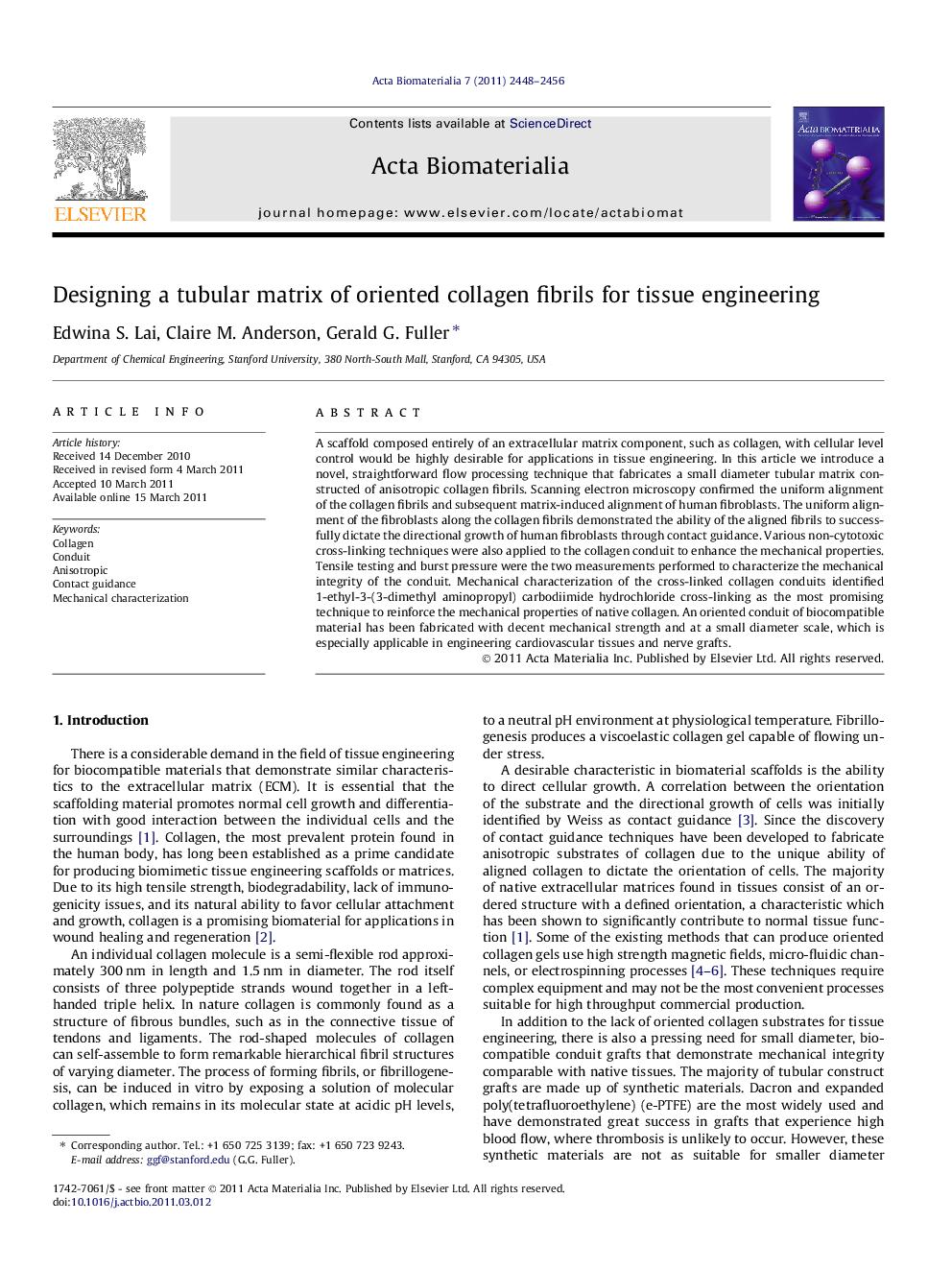| Article ID | Journal | Published Year | Pages | File Type |
|---|---|---|---|---|
| 1351 | Acta Biomaterialia | 2011 | 9 Pages |
A scaffold composed entirely of an extracellular matrix component, such as collagen, with cellular level control would be highly desirable for applications in tissue engineering. In this article we introduce a novel, straightforward flow processing technique that fabricates a small diameter tubular matrix constructed of anisotropic collagen fibrils. Scanning electron microscopy confirmed the uniform alignment of the collagen fibrils and subsequent matrix-induced alignment of human fibroblasts. The uniform alignment of the fibroblasts along the collagen fibrils demonstrated the ability of the aligned fibrils to successfully dictate the directional growth of human fibroblasts through contact guidance. Various non-cytotoxic cross-linking techniques were also applied to the collagen conduit to enhance the mechanical properties. Tensile testing and burst pressure were the two measurements performed to characterize the mechanical integrity of the conduit. Mechanical characterization of the cross-linked collagen conduits identified 1-ethyl-3-(3-dimethyl aminopropyl) carbodiimide hydrochloride cross-linking as the most promising technique to reinforce the mechanical properties of native collagen. An oriented conduit of biocompatible material has been fabricated with decent mechanical strength and at a small diameter scale, which is especially applicable in engineering cardiovascular tissues and nerve grafts.
